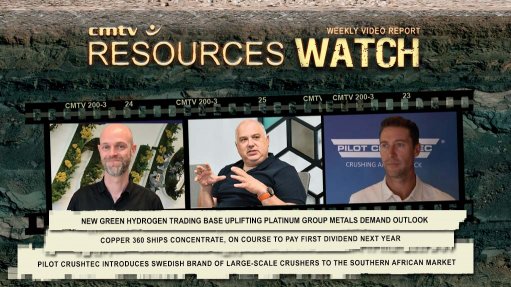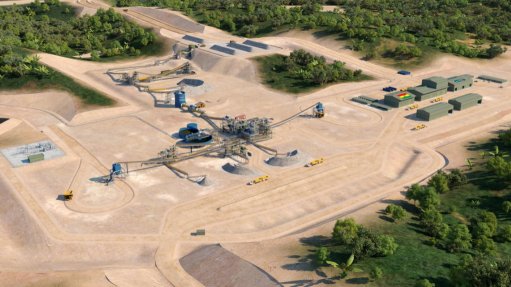Over-optimistic, exaggerated expectations in platinum market can lead to bad investment decisions, says CPM
Independent commodity research group CPM Group managing partner Jeffrey Christian has dispelled some of the common myths in the platinum market, which can lead to bad investment decisions on the part of producers, investors, governments and other financing sources.
“There are high costs to making financial decisions based on a desired future rather than a realistically probable future based on an erroneous understanding of present market conditions and probable outcomes,” he explains in a market alert issued on April 19.
Responding to a common question in the market alert of how it is possible that platinum prices could have fallen by more than half since 2008 while there has been large and persistent deficits of newly refined platinum compared with demand, he says there have, in fact, not been large and persistent deficits.
Rather, the platinum market has been in a heavy surplus balance throughout most of the past 50 years, including this year.
“The idea that the platinum market has been in a deficit is a marketing construction. It is not real,” Christian points out, adding that when there is a disconnect between market prices and an analysis of the market, especially an analysis by an interested party with decades of misreading a market, it is more likely the analysis is "wrong" than the market price.
The market price typically is better and more accurately informed than partisan analyses, Christian adds.
“The costs are high when there is misallocation of private and government expenditures based on an inaccurate current market view and hopes of platinum prices springing higher when 'the market wakes up to a shortage.”
The surpluses recorded by CPM are copacetic with how prices have performed in recent years, and indeed since the early 1980s.
“If we had consistently written that we saw large deficits, we would have been projecting higher platinum prices than ultimately transpired. Then we would have had to explain how platinum prices could be so low in the face of persistent deficits. Since we did not estimate nor project persistent large deficits, we have not had to try and justify persistent bullish price expectations,” Christian puts forward.
He suggests that there are fantasies that lead to overly optimistic platinum price expectations in the market.
Additionally, there is also the myth that fuel cell-powered vehicles will use enormous amounts of platinum.
In 1980, for example, South African producers and their marketing agents predicted that by 1988 more than 300 000 oz of platinum would be used yearly in fuel cell-powered vehicles. There are also present day predictions by global organisations that platinum demand is poised to grow on the back of fuel cell vehicle rollouts.
By 2022, the projection was that fuel cell-powered vehicles would be using one-million ounces of platinum by 2030.
This figure is closer to 100 000 oz in reality, CPM finds, adding that most fuel cell manufacturers can engineer platinum entirely out of their fuel cells.
Christian explained the rationale of these unfulfilled projections has been that fuel cells would compensate for the loss of automotive catalytic converter demand as the world transitions away from internal combustion engines (ICE).
CPM, together with the International Energy Agency (IEA), does not expect fuel cell vehicles to be commercially viable for most on-road vehicle applications, barring intra-city buses and select other fleet applications.
Christian elaborated that CPM does not expect light duty fuel cell vehicles to grow significantly until after 2040, and even then, it will only account for about 1% of yearly light-duty vehicles out to 2050.
Moreover, platinum producers often claim that if hydrogen can be safely and cheaply shipped, stored and distributed, fuel cell vehicles will take off. In turn, CPM cites automotive manufacturers as saying that if hydrogen can be shipped, stored and distributed cheaply and safely, they will produce hydrogen-engine ICE vehicles, and that hydrogen engines are cheaper and require no platinum group metals (PGMs).
Since more ideas are needed for future platinum uses, producers have often focused on the potential use of platinum, iridium and ruthenium in the electrodes that would be used for electrolysers.
IEA also projects little growth in this industry even to 2050 and, besides, Christian stated, some electrode manufacturers have said they can move away from PGMs in the production of electrodes entirely.
CPM predicts that by 2050 most vehicles will still be ICE-driven or hybrids that are still using PGMs. Although ICE engines will suffer market share losses to electric vehicles and other technologies, catalysts will still comprise 35% of yearly fabrication demand in 2050, vying for first place as the largest end use for platinum, alongside jewellery.
However, believing that there are large and persistent shortages of platinum can lead to bad investment decisions, Christian reiterated, adding that inaccurate current market views and hopes of platinum prices springing higher when the market wakes up to a sudden shortage will lead to misallocated funds and costly results.
Comments
Press Office
Announcements
What's On
Subscribe to improve your user experience...
Option 1 (equivalent of R125 a month):
Receive a weekly copy of Creamer Media's Engineering News & Mining Weekly magazine
(print copy for those in South Africa and e-magazine for those outside of South Africa)
Receive daily email newsletters
Access to full search results
Access archive of magazine back copies
Access to Projects in Progress
Access to ONE Research Report of your choice in PDF format
Option 2 (equivalent of R375 a month):
All benefits from Option 1
PLUS
Access to Creamer Media's Research Channel Africa for ALL Research Reports, in PDF format, on various industrial and mining sectors
including Electricity; Water; Energy Transition; Hydrogen; Roads, Rail and Ports; Coal; Gold; Platinum; Battery Metals; etc.
Already a subscriber?
Forgotten your password?
Receive weekly copy of Creamer Media's Engineering News & Mining Weekly magazine (print copy for those in South Africa and e-magazine for those outside of South Africa)
➕
Recieve daily email newsletters
➕
Access to full search results
➕
Access archive of magazine back copies
➕
Access to Projects in Progress
➕
Access to ONE Research Report of your choice in PDF format
RESEARCH CHANNEL AFRICA
R4500 (equivalent of R375 a month)
SUBSCRIBEAll benefits from Option 1
➕
Access to Creamer Media's Research Channel Africa for ALL Research Reports on various industrial and mining sectors, in PDF format, including on:
Electricity
➕
Water
➕
Energy Transition
➕
Hydrogen
➕
Roads, Rail and Ports
➕
Coal
➕
Gold
➕
Platinum
➕
Battery Metals
➕
etc.
Receive all benefits from Option 1 or Option 2 delivered to numerous people at your company
➕
Multiple User names and Passwords for simultaneous log-ins
➕
Intranet integration access to all in your organisation




















